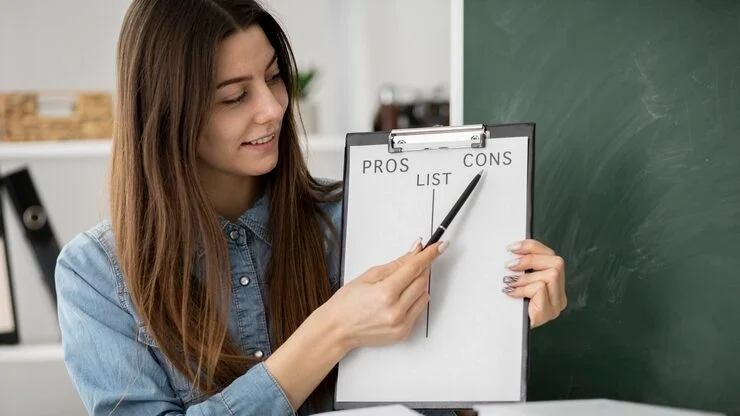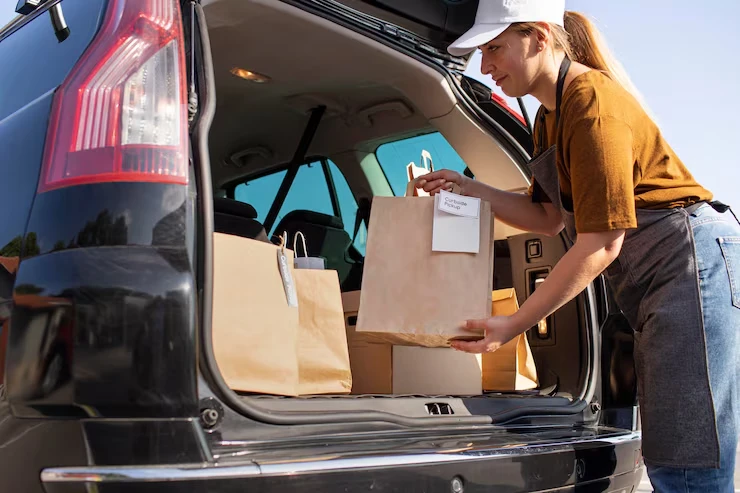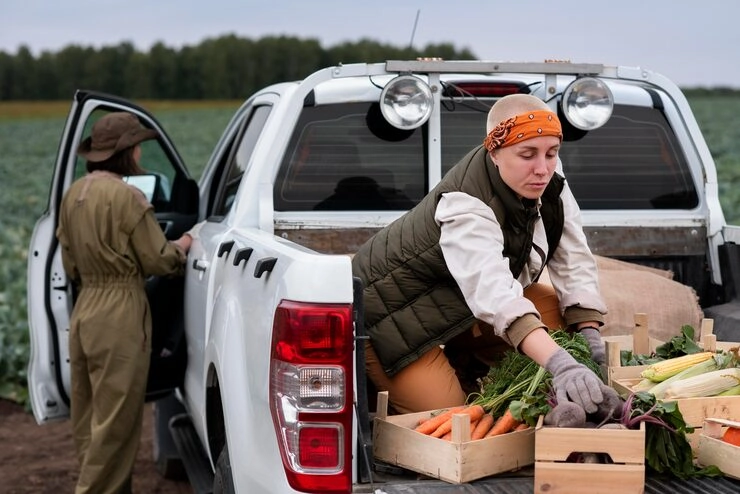When moving goods by car—whether it’s groceries, personal items, or packages—being unprepared can cause delays, damage, or even accidents. The phrase “rena monrovia when you transport something by car” recently gained attention across search engines and social platforms, but beyond the curiosity lies a helpful discussion: how to move things by car in a responsible and straightforward way.
If you’ve ever had to shift boxes, carry fragile goods, or deliver items across town, you already know the challenges. This guide breaks things down into practical steps so that you can keep your items, your vehicle, and yourself safe.
Who Is Rena Monrovia and Why Is This Phrase Circulating?
The phrase traces back to an answer from a writer or contributor named Rena Monrovia, often quoted in Q&A forums and social sites for her take on transportation safety. While there’s some ambiguity around the original context, what stands out is a simple truth: transporting items in a car demands the same level of planning as loading a massive Atlas Air Boeing 747 cargo plane, just on a smaller scale. The core principles of weight distribution and secure stowage are universal.
The phrase might seem niche at first glance, but it points to a topic many people overlook—especially during last-minute moves or everyday errands.
Whether you’re delivering meals, relocating belongings, or just getting ready for a weekend trip, these tips apply.
Start With the Basics: Preparation Matters

Transporting items safely isn’t just about how well you drive—it starts well before you even put the key in the ignition. Proper preparation prevents damage, improves safety, and can make the entire process less stressful. Whether you’re moving a few boxes, groceries, or equipment, a few extra steps in the beginning go a long way.
1. Check What You’re Transporting
Start by taking a good look at the items you plan to move. Are they fragile, oddly shaped, or heavy? Do they contain liquids or require specific temperatures? These details shape every decision that follows.
- Size and shape: Large or bulky items may require seat adjustments, more space, or even disassembly.
- Weight: Heavier items need to be placed lower and closer to the center of the vehicle for balance.
- Fragility: Glass, ceramics, electronics, and produce need cushioning and should not shift during transport.
- Temperature sensitivity: Items like food, flowers, or certain cosmetics degrade quickly in heat or cold, especially if the car will be parked for a while.
Understanding what you’re working with helps you avoid last-minute reshuffling, which often leads to poor loading or broken items.
2. Choose the Right Containers
The containers you use make a significant difference in how secure and stable your items will be during transport.
- Rigid boxes with secure lids prevent crushing and keep items contained.
- Plastic bins with handles offer added durability and can stack more easily than cardboard.
- Insulated bags or coolers help preserve temperature-sensitive items like prepared meals, groceries, or medication.
- Cushioned inserts like towels, newspaper, or packing foam can help protect delicate goods without adding unnecessary bulk.
It’s not just about holding the item—it’s about making sure it doesn’t move, break, spill, or spoil.
3. Clean Your Vehicle’s Cargo Area
It might sound like a minor step, but a dirty or cluttered car interior increases the risk of damage. Debris can puncture bags, interfere with straps, or shift unexpectedly while driving.
Before loading anything:
- Remove loose objects that could slide or roll.
- Vacuum or wipe down the area if transporting food or clothing.
- Check for anything sharp, oily, or unstable that might cause contamination or damage.
This simple habit reduces unexpected problems and extends the life of both your goods and your car’s interior.
4. Avoid Single-Use Packaging
It’s easy to fall back on plastic bags or thin boxes when in a rush, but these materials often tear, shift, or break under pressure.
Instead:
- Use sturdy, reusable containers that can be stored or repurposed after the move.
- Avoid excess packaging—extra padding is good, but over-wrapping can waste space and materials.
- Stick to recyclable or compostable materials when available.
Not only does this approach keep your items safer, it aligns with the broader goal of reducing waste—a value many individuals and brands care about.
Need help transporting school supplies or organizing a safe move for students? Read about Bree Purganan—a great example of thoughtful care in action.
Smart Loading Techniques That Reduce Risk

Packing a vehicle effectively is just as important as choosing the right items and containers. A poor loading job can lead to instability, blocked visibility, or damaged cargo. The goal isn’t just to fit everything in—it’s to arrange it in a way that keeps you and your items safe during the trip.
Place Heavier Items Low and Close to the Seatbacks
The heaviest items—such as boxes of books, large containers, or stacked bins—should always go on the floor and as far forward as possible. Position them directly behind the front seats or over the rear axle to help keep the vehicle balanced.
- This lowers the center of gravity, which improves handling.
- It reduces the risk of heavy objects sliding forward during sudden stops.
- Keeping the weight near the middle of the car helps with even braking and less strain on suspension.
Avoid placing anything heavy on top of lighter or fragile items. Not only can this crush smaller goods, but it also makes the entire load more unstable.
Keep Items From Obstructing Visibility
Your ability to see clearly out of all windows—especially the rearview mirror—is critical for safe driving. Overloading your vehicle to the point where the back window is blocked increases your risk on the road. Maintaining clear sightlines is a fundamental principle of Francis Scott Key Bridge safety and all road safety, allowing you to anticipate problems and react in time.
- Keep tall items below window height whenever possible.
- If you must carry taller cargo, use side mirrors more actively and take turns slowly.
- Avoid placing anything on the dashboard that could slide or reflect glare onto the windshield.
Clear sightlines let you respond faster to traffic changes, pedestrians, or emergency stops.
Even Weight Distribution
Uneven loading isn’t just uncomfortable—it’s dangerous. A car that’s heavier on one side handles differently, especially in turns or on uneven roads.
- Split heavier items between left and right sides of the car or trunk.
- Avoid stacking everything on one side for convenience.
- In hatchbacks or SUVs, distribute the load front-to-back as well as side-to-side.
Balanced cargo improves braking performance, keeps tires from wearing unevenly, and helps maintain better control at higher speeds.
Secure Everything
Even well-placed cargo can shift if it’s not anchored. Sudden stops, sharp turns, or uneven roads can turn loose items into moving hazards.
Use these to keep items stable:
- Bungee cords for securing boxes or large bags.
- Tie-down straps for heavy objects that might roll.
- Seatbelts to anchor containers in passenger seats.
Never leave items like bottles, tools, or electronics unsecured. In a quick stop, these can move rapidly and cause injury or distraction.
Taking a few minutes to double-check how things are held in place can save time and prevent damage during transit.
Stay Safe on the Road
Once your vehicle is packed, the way you drive becomes even more important. A loaded car behaves differently than an empty one—turns are wider, braking takes longer, and responsiveness can decrease. Adjusting your driving habits can help you reach your destination without incident.
Drive Slower Than Usual
Extra weight adds momentum, which means your car won’t stop as quickly as it normally would.
- Increase your following distance from other vehicles.
- Approach intersections and turns more gradually.
- Avoid sudden lane changes or abrupt maneuvers.
Even a 5–10 km/h reduction in speed can give you the added control you need when carrying a full load.
Watch Your Tire Pressure
Tires carry the full burden of your vehicle’s load. When you’re transporting heavy items, your tires are under added pressure—literally.
- Check tire pressure before and during long trips.
- Inflate to the upper range of your manufacturer’s recommendation when carrying full loads.
- Look for signs of tire stress: bulging sidewalls, reduced traction, or unusual noises.
Properly inflated tires not only increase safety but also help with fuel efficiency and reduce wear.
Check Weather and Traffic Conditions
Driving conditions can change quickly. Rain, snow, or heavy congestion affect stopping time and overall safety.
- Avoid driving in extreme heat or cold if transporting sensitive items.
- If rain is expected, make sure your wipers and lights are working.
- In heavy traffic, be extra cautious with lane changes and spacing.
A loaded car takes longer to react, so planning your route and staying up-to-date with road conditions matters more than usual.
Take Breaks
Longer drives should always include periodic stops—not just for you, but for the cargo.
- After the first 30 minutes, stop and inspect your load to ensure nothing shifted.
- Use each break to check for leaks, unusual smells, or heat buildup around temperature-sensitive goods.
- Give yourself time to stretch and hydrate. Fatigue leads to slower reactions, especially when you’re responsible for valuable or fragile items.
Short, scheduled breaks add safety without significantly delaying your trip.
Use tools like https //www.microsoft.com/ink to plan your routes or draw out space configurations before loading. A few extra minutes of prep can save hours of hassle.
Everyday Sustainability While You Transport
You don’t need to overhaul your routine to make small, consistent changes:
- Pack light and smart: Less weight means fewer emissions and better mileage.
- Choose vehicles with better fuel efficiency when possible. For those using delivery services or helping others transport, consider shared trips or electric options.
- Use what you already have: Suitcases, baskets, or reusable totes are often better than cardboard.
These simple habits align with more thoughtful living—something that matters to anyone interested in responsible consumption, including those interested in plant-based lifestyles or local deliveries.
Things to Avoid When Transporting Goods by Car

- Overpacking: A full car may seem efficient, but an overloaded vehicle increases wear and lowers safety.
- Ignoring limits: Every car has a payload capacity. Check your manual.
- Loose objects: Keep tools, electronics, and even groceries secured. Even a water bottle can slide under a pedal and cause an accident.
- Rushing: A few minutes saved isn’t worth damaged cargo or traffic incidents.
Be Prepared for What Could Go Wrong
Even short drives can turn unpredictable. Here are a few must-haves:
- Basic tool kit
- Duct tape or rope for emergency securing
- Flashlight and reflective vest
- Water and snacks (if you’re transporting items long-distance or during heat)
- Insurance info and emergency numbers
It’s not about assuming the worst—it’s just being practical.
What Can We Learn From Rena Monrovia’s Perspective?
Rena Monrovia’s viral quote—however it surfaced—reminds us that moving things by car isn’t just about getting from A to B. It’s about being thoughtful with every step, reducing waste, and staying aware of how our actions impact others on the road.
At Plant Sumo, we think this mindset aligns with values like responsibility, respect, and care—whether it’s in the way we prepare meals or move them across town.
FAQs
Q: What’s the safest way to move fragile items by car?
Use padded boxes, limit stacking, and secure items so they can’t slide.
Q: How do I know if my load is too heavy?
Check your vehicle’s owner manual. Pay attention to how the car handles—if braking feels slower, it may be overloaded.
Q: Can I transport groceries or food safely in the trunk?
Yes, but avoid hot surfaces, keep items insulated, and don’t stack perishables on top of each other.
Q: Should I use the front seat for transporting?
Only if the item doesn’t block airbags or your ability to drive. Back seat or trunk is generally safer.
Thanks for reading. For more practical guides like this, check out Plant Sumo and stay prepared for the everyday moments that matter.





